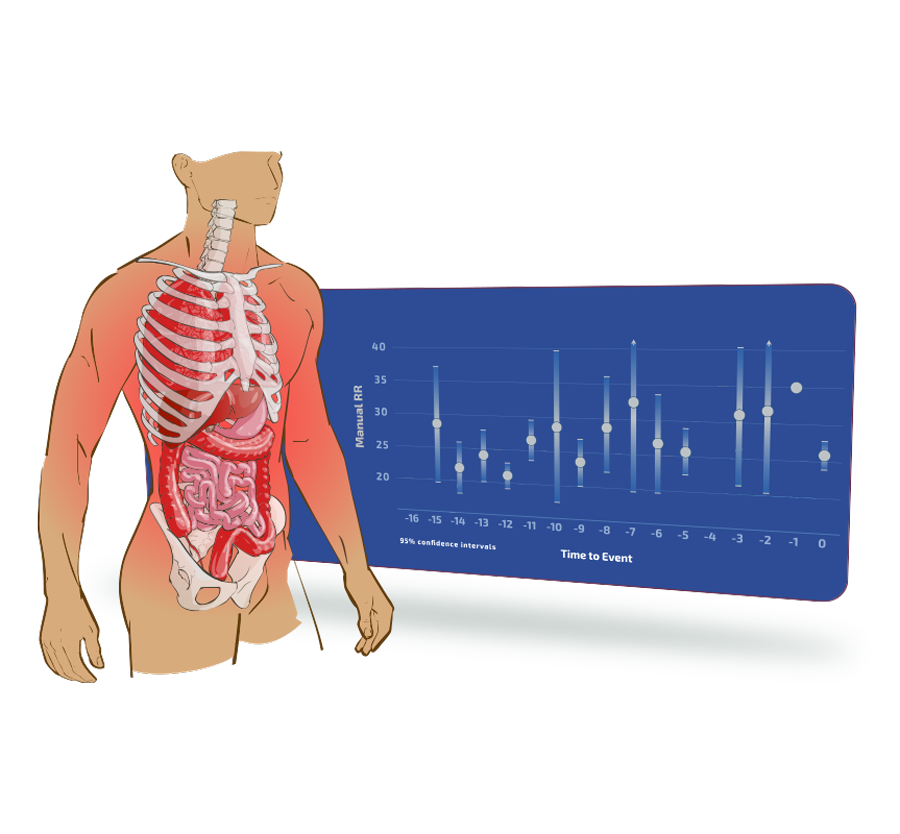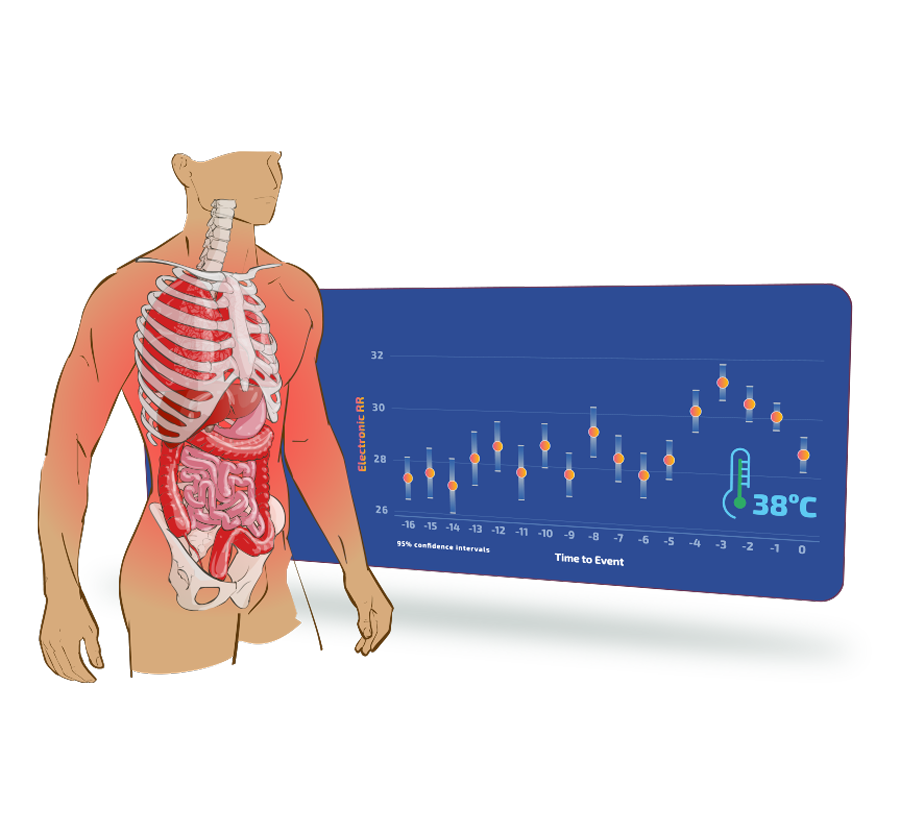Sepsis is a clinical syndrome caused the body’s immune and coagulation systems being switched on by the presence of infection (bacteria or viruses) in the blood.[7]
Septic shock should be defined as a subset of sepsis in which particularly profound circulatory, cellular, and metabolic abnormalities are associated with a greater risk of mortality than with sepsis alone.[10]
Manual measurement of Respiratory rate (mRR) can underestimate the severity of the patient’s status as RR may be compensating for the evolving Metabolic Acidosis. This is critical when evidence suggests that there is no significant variance in temperature between the stages of Sepsis.[2]



Electronic Respiratory Rate (eRR) gives reliable trends in RR before mRR as the body attempts to maintain oxygen delivery to the tissues.[5]
